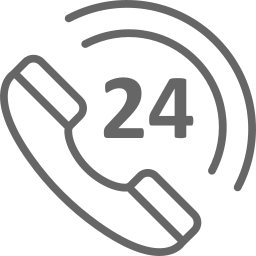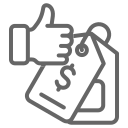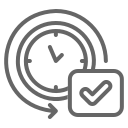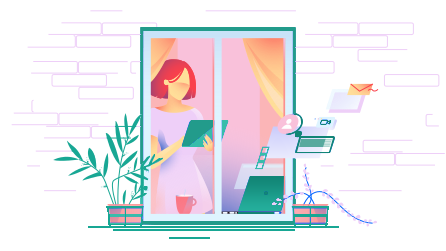Part-1
The metabolic pathways involved in the digestion, absorption and metabolism of the carbohydrate is disused briefly. The carbohydrate-rich meal is broken down into simple sugars such as monosaccharides, glucose, fructose and galactose. For example, the salivary amylase enzyme present in the mouth digests the carbohydrates into simple monosaccharides (Peyrot des Gachons & Breslin, 2016). The partially digested carbohydrate-rich meals then enter the small intestine via the stomach. Conversion of the partially digested carbohydrates to disaccharides and further to glucose, fructose and galactose take when the pancreatic enzyme acts on it. Finally, carbohydrates are broken down into as monosaccharides, glucose, fructose and galactose.
The absorption of the digested products takes place mainly at the brush bordered cells located at the small intestine, more specifically the villi cells. These cells have transporters over their surface of the cells that helps to facilitate the absorption of glucose, fructose and galactose into the bloodstream (Holmes, 1971). This process is facilitated by the sodium ions that helps the glucose, fructose and galactose to move across the channels present in the villi. After absorption of these molecules into the bloodstream, different molecules undergo different metabolism at different organs for the synthesis of new biomolecules.
The metabolism of glucose follows a series of interdependent pathways. The glucose is converted to pyruvate, the process known as glycolysis. The glycolysis of glucose yields 2 moles of pyruvate per cycle by using NADH to release NAD+. The pyruvate produced from the glycolysis pathways undergoes aerobic or anaerobic respiration (Based on the presence or absence of oxygen in the cells) resulting in the formation of energy-rich ATP molecules and Lactate + NAD+ respectively. Another common pathway for metabolization of pyruvate is the lipogenesis.
The lipogenesis is the starting pathway for synthesis of fats. Lipogenesis starts with the addition of acetyl CoA to the carbohydrate molecule resulting in the synthesis of fatty acid as the end product. Two of the interdependent pathways which the glucose shuttles between its polymer (Glycogen) and to its monomer state (glucose). These pathways are named as glycogenolysis and glycogenesis. In glycogenesis, the glucose molecules are polymerized to form glycogen and stored it in the tissues for future use. In glycogenolysis, the polymerized form of glucose is broken down into the simple molecules of glucose. The most important fact to be noted here is that the hormone insulin helps in the conversion of free glucose to its polymerized form, glycogen.
One of the common ways for the metabolism of fructose is to convert them into a suitable molecule that is similar to the ones in the glycolysis pathway. This can be done by converting the fructose to fructose 6 phosphate by an enzyme called hexokinase. The fructose 6 phosphate then follows the series of reactions in the glycolysis metabolic pathway to release pyruvate as the final product. This is one strategic pathway for the fructose to convert into pyruvate, which ultimately can be directed for the synthesis of various products.
The conversion of glycogen to glucose starts in the liver. The glycogen is a branched polymer of glucose. This branched polymer of glucose is degraded to release individual glucose molecules by following three major steps (Berg et al., 2002). These three major steps are releasing the free glucose 1-phosphate molecule from the glycogen polymer, restricting the glycogen polymer to further degrade the glycogen structure, conversion of glucose 1-phosphate to the glucose 6-phosphate for further metabolism. The glucose obtained from the degradation of glycogen can be channelled into two major metabolic processes based on the requirement. It can be directed into the glycolysis pathway as the starting material for glycolysis is the glucose. The second way is channelling the glucose to pentose phosphate pathway used for the production of ribose sugars.
From the above discussion, it is clear that the glycolysis pathway is the main metabolic pathway taken for the breakdown of glucose. This is because the glucose is the main compound produced during direct and indirect (Using Galactose) digestion and conversion respectively. Also, fructose is channelled to the glycolysis pathway by suitable modifications.
Part-2
From the given details, it is evident that John is experiencing a chronic disease named obesity. It was also mentioned that John has a high possibility to get type 2 diabetes soon. The following paragraph describes these diseases in detail and the connection between them.
Obesity is a disease where the patient suffers from overweight. This happens when the amount of ideal fat under the tissues increases manifold. The increase in the fat content in tissue has corresponding negative effects in the body. Some of the major diseases include hypertension, heart attacks and type 2-diabetes, which is more prevalent in obese individuals. Diabetes is of 2 main types namely the type 1 and type 2. The Type 1 diabetes is seen in patients who have damaged beta cells in the pancreas whereas type 2-diabetes is diagnosed in the individuals who have insulin secretory defects.
Both types of diabetes lead to a spike in the blood glucose level. There is a direct relationship between type 2-diabetes and obesity. As indicated in the previous paragraph, obesity is the buildup of fats in the tissues. These fats when degraded results in the formation of free radicals. These free radicals bind to the insulin, resulting in inactivation of the hormone. This cause type-2 diabetes was the spike in sugar level is seen. There exist a relationship between the number of fats deposited in the tissues to the probability of becoming insulin resistant which in turn results in the type 2-diabetes. The connection between the diseases is explained using the metabolic in the following paragraph.
As explained in part -1, two of the interdependent pathways which the glucose shuttles between its polymer (Glycogen) and to its monomer state (glucose) are the point of inflexion for diabetes. This can be explained in as follows for easy understanding. Firstly, insulin is essential to convert the “excess” glucose present in the blood to its polymer form called glycogen (Sullivan & Forbes, 2019). This essentially means that glycogenesis is driven by the presence of insulin in the blood, which acts as the catalyst for driving the conversion of glucose to glycogen.
When more amount of carbohydrate is consumed, the fatty acids are synthesized by the lipogenesis pathway, which in turn when coupled with the glycerol (Which is obtained as a product in the lipolysis of the fats and oils consumed along with the diet) results in the formation of fats that are stored in the adipocyte cells. These cells rich in fats release fatty acids during breakdown accompanied by the release of free radicals, which binds to the insulin and inactive them. The inactivation of insulin results in the inability of the excess glucose to get converted to glycogen. This results in hyperglycemia, which is the presence of a high concentration of glucose in the blood. This condition is called as the type 2-diabetes initiated due to obese condition.
Reference
Berg JM, Tymoczko JL, Stryer L. Biochemistry. 5th edition. New York: W H Freeman; 2002. Section 21.1, Glycogen Breakdown Requires the Interplay of Several Enzymes. Available from: https://www.ncbi.nlm.nih.gov/books/NBK22467/
Holmes, R. (1971). Carbohydrate digestion and absorption. Journal of Clinical Pathology, S3-5(1), 10–13. https://doi.org/10.1136/jcp.s3-5.1.10
Peyrot des Gachons, C., & Breslin, P. A. S. (2016). Salivary Amylase: Digestion and Metabolic Syndrome. Current Diabetes Reports, 16(10). https://doi.org/10.1007/s11892-016-0794-7
Sullivan, M. A., & Forbes, J. M. (2019). Glucose and glycogen in the diabetic kidney: Heroes or villains? EBioMedicine, 47, 590–597. https://doi.org/10.1016/j.ebiom.2019.07.067
Remember, at the center of any academic work, lies clarity and evidence. Should you need further assistance, do look up to our Organic Chemistry Assignment Help

Get 24x7 instant assistance whenever you need.

Get affordable prices for your every assignment.

Assure you to deliver the assignment before the deadline

Get Plagiarism and AI content free Assignment

Get direct communication with experts immediately.
Secure Your Assignments
Just $10
Pay the rest on delivery*

It's Time To Find The Right Expert to Prepare Your Assignment!
Do not let assignment submission deadlines stress you out. Explore our professional assignment writing services with competitive rates today!
Secure Your Assignment!